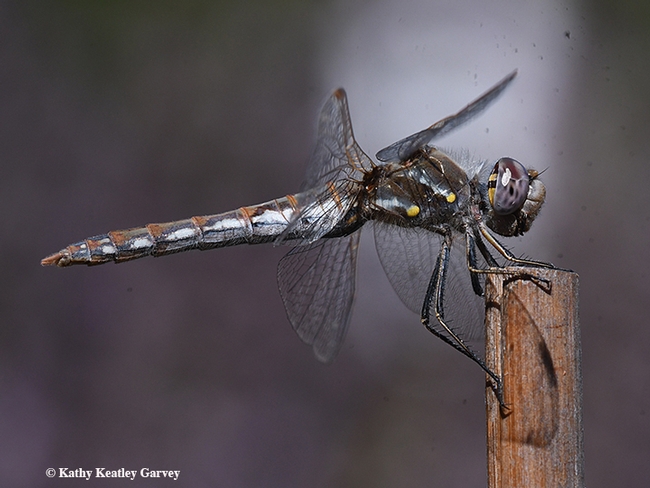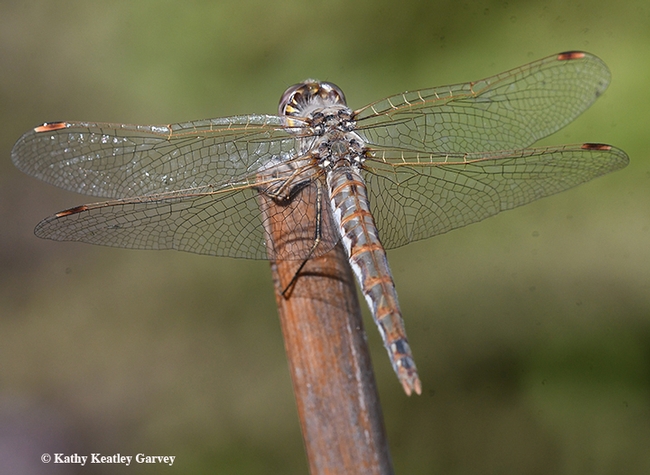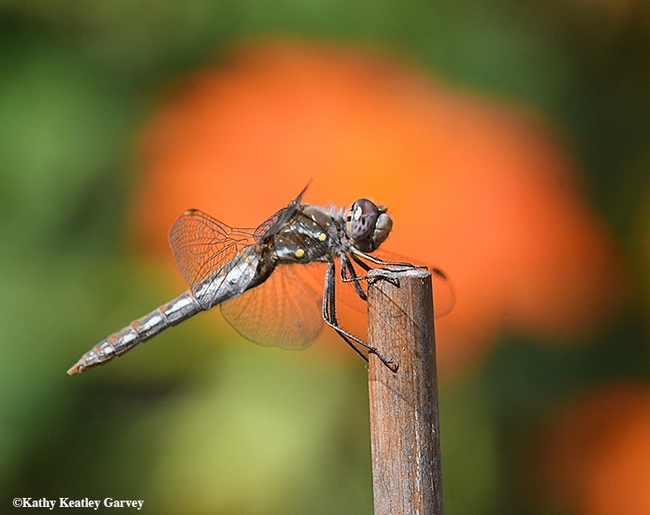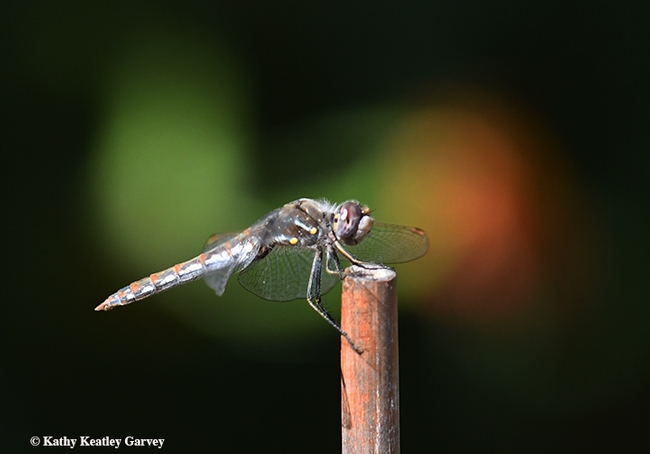They don't announce their arrival or departure.
If you're an insect photographer, or a wanna-be-insect photographer, expect the unexpected and don't go anywhere without your camera.
That applies to such simple things as walking out your back door and stepping into your pollinator garden.
It was Friday morning, Oct. 12, and we watched a gust of wind stir the African blue basil, tousle the milkweed, and whip the 12-foot-high Mexican sunflower. "Ah, wind," I thought. "A good day for dragonflies."
As if on cue, a variegated meadowhawk dragonfly, Sympetrum corruptum, touched down on a bamboo stake, and looked right at me. I edged closer and "she" (gender identified by naturalist Greg Kareofelas, an associate with the Bohart Museum of Entomology, University of California, Davis) quickly left her perch.
I figured she would return and she did. Camera already raised, I slowly pointed my Nikon D800 with the 200mm macro lens and pressed the shutter. She left. She returned. She left. She returned.
A 'portrait studio' with the subject giving me "yes-no-maybe" answers.
In one view below, you can see the “bi-colored” Pterostigma on the wing tip and the two black spots on the top of the tip of the abdomen," noted Kareofelas. "This is unique to this species."
In another view, you can see the blurred image of a Mexican sunflower (Tithonia) forming a backdrop.
Insect photography takes patience, persistence and perseverance because these six-legged critters don't announce their arrival or their departure, not like at an airport or a train station.
But they are there. "At any time, it is estimated that there are some 10 quintillion (10,000,000,000,000,000,000) individual insects alive," according to the Smithsonian Institute. That's about 200 million insects for every human on the planet.
Your camera will find at least one of them at any given time of day.
Attached Images:

A female variegated meadowhawk dragonfly, Sympetrum corruptum, perches on a bamboo stake in Vacaville, Calif. (Photo by Kathy Keatley Garvey)

In this view, you can see the “bi-colored” Pterostigma on the wing tip and the two black spots on the top of the tip of the abdomen," noted Greg Kareofelas, Bohart Museum of Entomology associate. "This is unique to this species (Sympetrum corruptum)." (Photo by Kathy Keatley Garvey)

A blurred Mexican sunflower (Tithonia) forms a backdrop for the variegated meadowhawk dragonfly, Sympetrum corruptum. (Photo by Kathy Keatley Garvey)

A flickering light and backdrop of a Mexican sunflower add to this image of the dragonfly, Sympetrum corruptum. (Photo by Kathy Keatley Garvey)